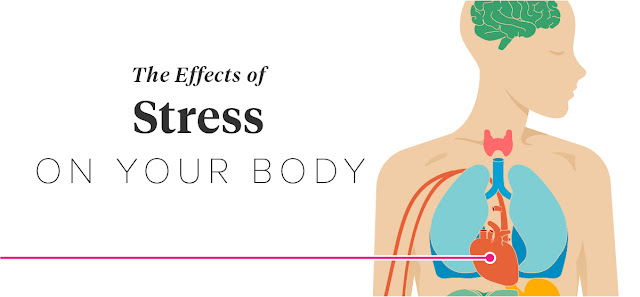Keto Bites
Everything about Health and Self-care!!! Before joining the blog think that : ''How much do you care about yourself ? ''

It is not suitable during pregnancy or breastfeeding and you should be particularly cautious of this diet if you have had kidney stones or are already at a low body weight. Individuals with gallbladder or pancreatic issues also need to be careful as fat may be poorly absorbed and digested, with the potential to make you feel very unwell.
So before you 'go keto', or for that matter undertaking any drastic dietary changes, it's worth consulting a qualified health care practitioner to ensure this is suitable for you.
Also, because the keto diet requires avoiding certain foods including some vegetables, you can be at risk of nutrient deficiency if you are not getting enough of what you need from 'keto-friendly' sources every day.
👉 What a keto 'day on a plate' looks like
Keto Bites
The next big thing in weight loss, the ketogenic diet might help you shed kilos but it's not for everyone. Here's why...
The ketogenic (keto) diet was initially used in the 1920's as a therapeutic treatment for epilepsy. Since then, it remains a 'recognized and proven therapy for epilepsy'*, but most recently has gained recognition as a fast-track weight loss diet. Before jumping on the keto-bandwagon, it pays to know what you are in for and if it's right for you before you start the fat burn.
👉 What is the keto diet?
The keto diet is a high fat, low carbohydrate diet that induces the metabolic state of ketosis which occurs when the brain and body use fat instead of glucose (sugars) as its primary source of energy. During ketosis, fat is converted to molecules referred to as 'ketone bodies' in the liver for the body to draw on for energy in situations where glucose from carbohydrate sources are depleted or limited (which is deliberate on the keto diet).
👉 What does the keto diet include?
With a high fat, moderate protein and low carbohydrate style of eating, this relatively strict diet requires discipline to be able to maintain a state of ketosis. The quality of fat also makes a big difference - so include good quality fats deriving from extra virgin olive oil, grass-fed butter, nuts, seeds, avocado, eggs, fatty fish and meat as opposed to highly processed fats such as margarine and canola oil. Carbohydrate-rich foods including starchy vegetables and other refined carbohydrates such as rice, pasta, bread, and sugar are a no-no.
👉 Is it for me?
While the keto diet has been shown to be beneficial and therapeutic in some instances in the short-term, whether this is a sustainable approach for the body in the long-term requires further investigation. It impacts on strength and sports performance is not well understood, making it potentially unsuitable for those participating in high-intensity activities such as weight-lifting and sprinting.

It is not suitable during pregnancy or breastfeeding and you should be particularly cautious of this diet if you have had kidney stones or are already at a low body weight. Individuals with gallbladder or pancreatic issues also need to be careful as fat may be poorly absorbed and digested, with the potential to make you feel very unwell.
So before you 'go keto', or for that matter undertaking any drastic dietary changes, it's worth consulting a qualified health care practitioner to ensure this is suitable for you.
👉 Tips
If you're keen to take the plunge, it can take up to a few weeks to induce a state of ketosis and during this time you may feel pretty bad. When shifting to a high-fat diet it's common to experience flu-like symptoms such as weakness, dizziness, fatigue, constipation, and headaches. So, it's important to stay hydrated and get enough sleep.
Also, because the keto diet requires avoiding certain foods including some vegetables, you can be at risk of nutrient deficiency if you are not getting enough of what you need from 'keto-friendly' sources every day.
The keto diet is based on roughly 75 percent good fats (e.g. nuts and seeds, olive oil, butter, cheese, avocado), 20 per cent protein (e.g. eggs, meat, poultry, fish), and five per cent carbohydrates (e.g. low starch vegetables such as cauliflower, tomatoes, leafy greens).
An average day might look like the following:
• Breakfast - eggs cooked in grass-fed butter with coconut oil sautéed spinach;
• Morning snack – full-fat yogurt topped with mixed seeds;
• Lunch - salmon, avocado and leafy green salad with olive oil and tahini dressing;
• Afternoon snack – a handful of macadamia or brazil nuts;
• Dinner - the grass-fed cut of meat cooked in butter with cauliflower 'rice'; and
• After dinner snack – bone broth.
• Breakfast - eggs cooked in grass-fed butter with coconut oil sautéed spinach;
• Morning snack – full-fat yogurt topped with mixed seeds;
• Lunch - salmon, avocado and leafy green salad with olive oil and tahini dressing;
• Afternoon snack – a handful of macadamia or brazil nuts;
• Dinner - the grass-fed cut of meat cooked in butter with cauliflower 'rice'; and
• After dinner snack – bone broth.






